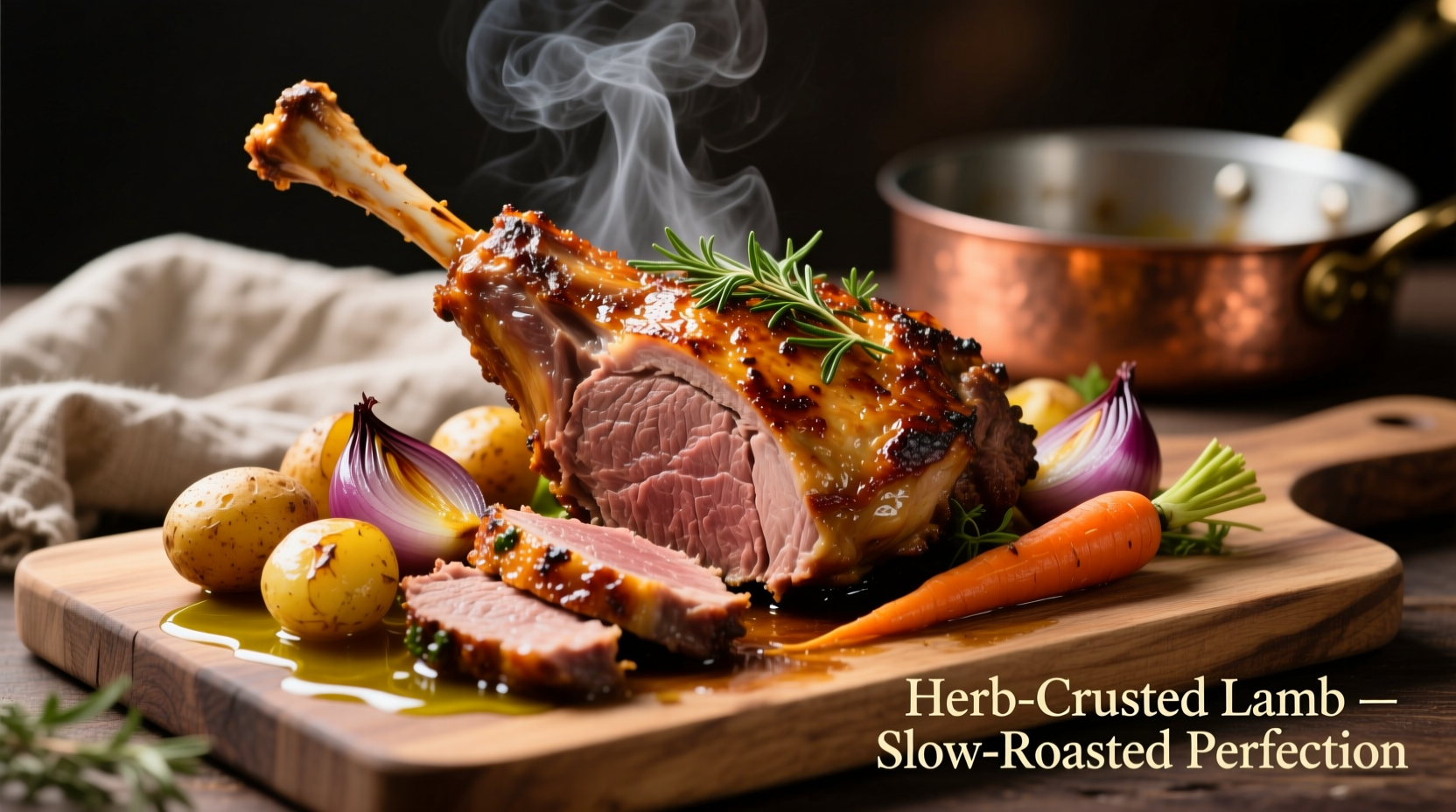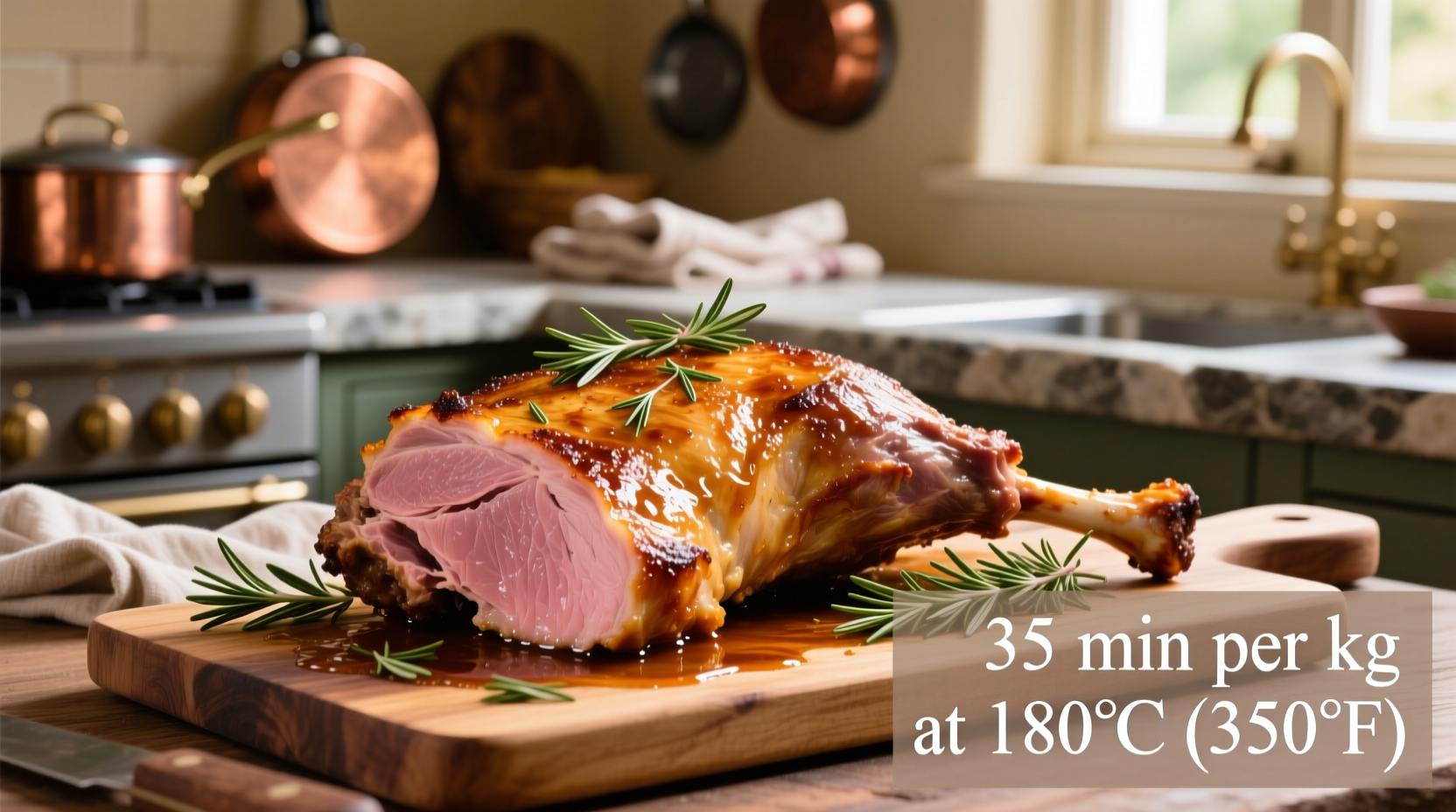Nothing elevates a special occasion meal like a perfectly cooked leg of lamb. Get the timing right, and you'll achieve succulent, flavorful meat that falls off the bone. Get it wrong, and you risk dry, tough results that disappoint your guests. This guide delivers precise cooking times based on weight, oven temperature, and desired doneness—plus professional techniques to ensure success every time.
Why Precise Timing Matters for Leg of Lamb
Lamb's delicate flavor and texture demand careful attention during cooking. Unlike poultry or pork, lamb benefits from slightly higher internal temperatures while maintaining tenderness. Undercooking leaves an unpleasant gamey taste, while overcooking transforms tender meat into dry, stringy fibers. The sweet spot lies in understanding how weight, starting temperature, and oven conditions interact.
Essential Preparation Steps Before Cooking
Proper preparation sets the stage for perfect results:
- Bring lamb to room temperature (remove from refrigerator 1-2 hours before cooking)
- Pat dry with paper towels for optimal browning
- Score fat cap in diamond pattern to render fat evenly
- Season generously with salt, pepper, and aromatic herbs
- Preheat oven to ensure consistent cooking from the start
Leg of Lamb Cooking Time Guide
These guidelines apply to bone-in legs (5-7 lbs) roasted at 325°F (163°C). Always use an instant-read thermometer for accuracy:
| Weight | Medium-Rare (145°F) | Medium (160°F) | Well-Done (170°F) |
|---|---|---|---|
| 5 lbs | 75-100 minutes | 100-125 minutes | 125-150 minutes |
| 6 lbs | 90-120 minutes | 120-150 minutes | 150-180 minutes |
| 7 lbs | 105-140 minutes | 140-175 minutes | 175-210 minutes |
Note: Boneless legs cook approximately 20% faster than bone-in. Always verify with a thermometer rather than relying solely on time.
Temperature Guide for Perfect Doneness
The USDA Food Safety and Inspection Service recommends minimum internal temperatures for lamb safety, but culinary professionals often adjust based on preference:
- Rare: 125-130°F (final 130-135°F after resting) - very red center
- Medium-Rare: 135-140°F (final 145°F) - warm red center (recommended for best texture)
- Medium: 145-150°F (final 160°F) - pink center
- Well-Done: 160°F+ (final 170°F+) - little to no pink
Remember that carryover cooking will raise the internal temperature 5-10°F during resting. Remove lamb from oven when thermometer reads 5°F below your target temperature.
Step-by-Step Cooking Process
Follow these professional steps for restaurant-quality results at home:
- Preheat oven to 325°F (163°C) - avoid higher temperatures that cause uneven cooking
- Place lamb fat-side up on a rack in a roasting pan
- Insert oven-safe thermometer into thickest part (avoiding bone)
- Roast undisturbed until thermometer approaches target temperature
- Baste with pan juices every 30 minutes for added flavor (optional)
- Check temperature 20 minutes before expected finish time
- Remove when 5°F below target temperature (carryover cooking will finish the process)

The Critical Resting Period
Resting isn't optional—it's essential for juicy results. During cooking, meat fibers contract and push juices toward the center. Resting allows these juices to redistribute throughout the meat.
For a leg of lamb:
- Cover loosely with foil to retain heat
- Rest for 15-20 minutes (1 minute per pound is a good rule)
- Do not skip this step—cutting too soon releases precious juices
- Internal temperature will continue rising 5-10°F during rest
Troubleshooting Common Issues
Even experienced cooks encounter challenges. Here's how to handle them:
Problem: Uneven Cooking
Solution: Rotate pan halfway through cooking. For significant temperature variations in your oven, position the thicker part of the leg toward the back where heat is usually more intense.
Problem: Excessive Smoke or Burning
Solution: Add 1 cup of water to the bottom of the roasting pan. This creates steam that prevents drippings from burning while maintaining oven humidity.
Problem: Meat Too Dry
Solution: Next time, reduce cooking time by 10-15% and rely more on thermometer readings than clock time. Consider brining the lamb for 12-24 hours before cooking to improve moisture retention.
Special Considerations for Different Cooking Methods
While conventional oven roasting is most common, these adjustments apply to alternative methods:
- Grilling: Use indirect heat at 325°F. Cooking time similar to oven but requires more frequent temperature checks
- Sous Vide: Cook at 130°F for 24-48 hours, then sear for crust (requires precision equipment)
- Slow Roasting: Cook at 275°F for 4-5 hours for ultra-tender results (ideal for larger legs)
Modern convection ovens reduce cooking time by approximately 25%—adjust accordingly and monitor temperature closely.
Serving Your Perfectly Cooked Leg of Lamb
After resting, carve against the grain for maximum tenderness. For presentation:
- Remove the aitch bone for easier carving
- Slice ¼-inch thick against the grain
- Serve with pan juices or a complementary sauce
- Pair with roasted vegetables, mint jelly, or a red wine reduction
Leftovers make excellent cold cuts for sandwiches or can be repurposed into shepherd's pie, lamb curry, or salads.











 浙公网安备
33010002000092号
浙公网安备
33010002000092号 浙B2-20120091-4
浙B2-20120091-4